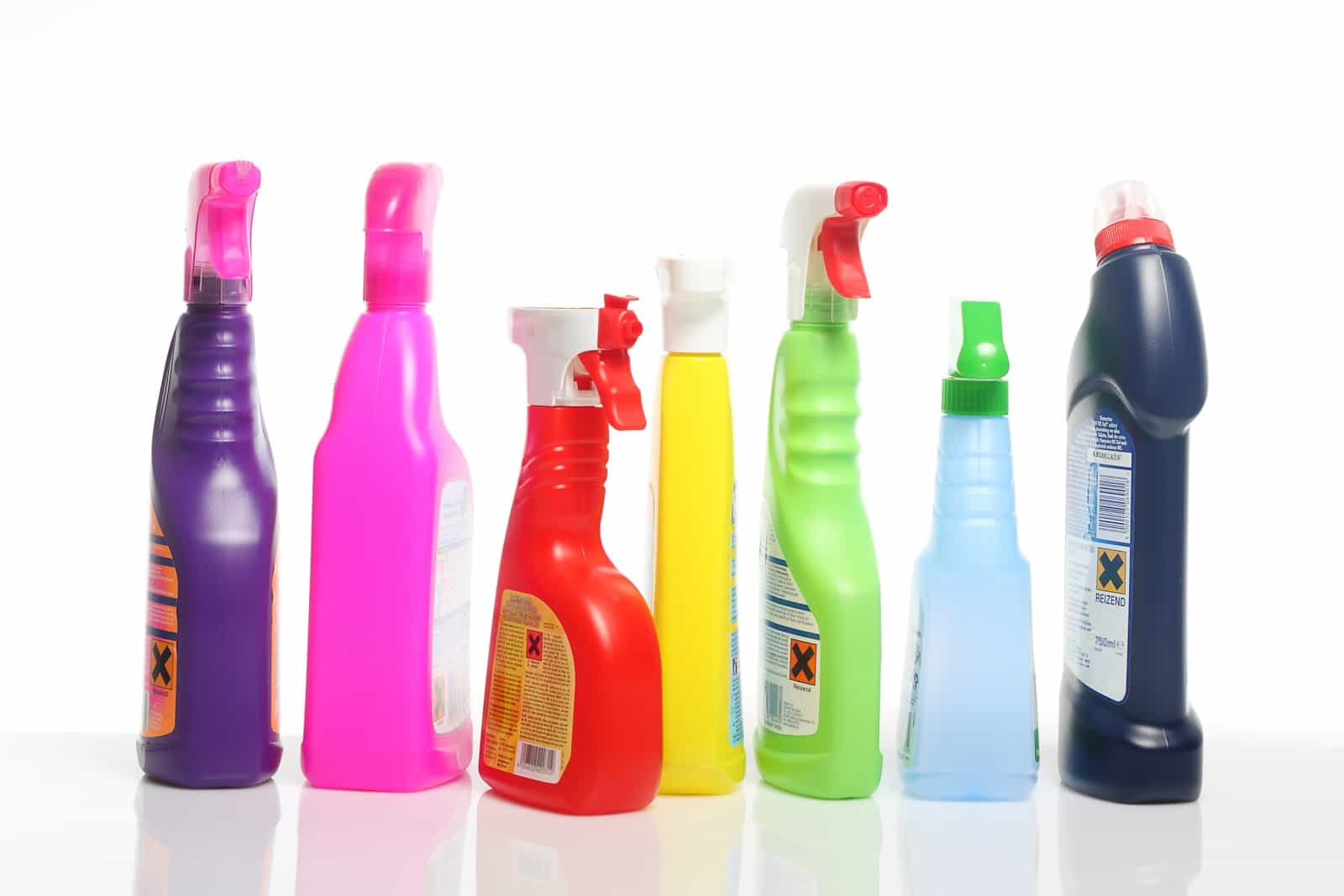Most people think of house cleaning products as safe and necessary tools for maintaining a clean home and preventing the spread of germs. After all, isn’t it a good thing to kill the pathogens that could make us sick? But it is much more complicated than that, and the reality is that most household cleaning products pose serious health risks. In other words, the contents of most cleaning bottles aren’t nearly as innocent as their packaging makes them appear.
Popular products such as disinfectants, air fresheners, and toilet bowl cleaners contain ingredients that can wreak havoc on your health, especially your body’s respiratory system. One study even suggests that regular exposure to cleaning chemicals is comparable to smoking a pack of cigarettes a day.
Keep reading for an explanation of this alarming study, vital information about the dangerous ingredients found in common cleaning products, and ideas for healthy alternatives that will keep your home clean without the health risks.
Volatile Organic Compounds:
Why They Matter And How They Make Their Way Into Your Home Via Cleaning Products
Volatile Organic Compounds (VOCs) are “compounds that easily become vapors or gases.” VOCs found in everyday cleaning products may cause allergic reactions, headaches, and irritation of the eyes, throat, and lungs. This includes compounds that are officially classified as hazardous or toxic, according to federal laws. They may trigger cancer or cause ongoing respiratory problems. Notably, products labeled “organic” or “natural” transmit just as many dangerous chemicals as standard cleaning products.
Here are some examples of common cleaning supplies that contain VOCs:
- Oven cleaning solutions
- Detergent and dishwashing liquid
- Rug and upholstery cleaning products
- Aerosol sprays
- Air fresheners
- Floor and furniture polish
10 Common Toxins Lurking in Your Cleaning Products
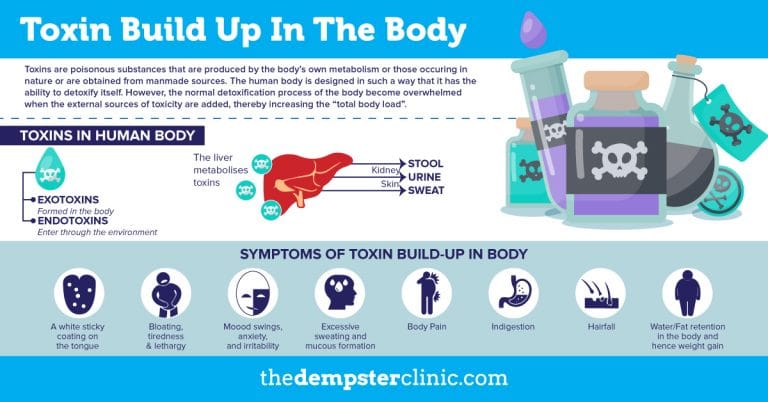
Although household chemicals are regulated under Canada’s Consumer Chemicals and Containers Regulations, it does not instruct manufacturers to list all ingredients. And, while some manufacturers do choose to list ingredients, they often provide only a partial ingredient list. However, companies are required to place hazard symbols on product labels. This is a sign that the product may be unsafe.
The following is a list of the worst ingredients and their negative effects on health. They can enter the body in one of two ways: inhalation and/or direct skin contact.
1. Sodium Hydroxide
Sodium hydroxide, a particularly corrosive substance, is typically found in drain openers and oven cleaning solutions. Inhalation can trigger a sore throat, and it can cause acute burns if it comes in contact with your skin or eyes.
2. 2-Butoxyethanol
This nasty toxin is used in most multipurpose and window cleaners. While it gives these products their characteristically sweet scent, it can make you sick. Like sodium hydroxide, it may prompt a very sore throat when inhaled. Even worse, higher amounts of inhalation can cause pulmonary edema, narcosis, and harm to the kidneys and liver.
3. Phthalates
Phthalates show up in many dish soaps and detergents. They are linked to fertility problems, damage to DNA, and a decline in respiratory health.
4. Quaternary Ammonium Compounds (QUATS)
Quaternary Ammonium Compounds, or QUATS, are present in most household cleaning products with the word “antibacterial” on the packaging. Like so many of the toxins used in cleaning solutions, they increase the likelihood of respiratory problems skin irritation.
5. Parabens
These antimicrobial preservatives, found in both household cleaning supplies and many beauty products, are classified as endocrine disruptors because of their estrogenic effects. There are strong associations between paraben exposure and disruption of natural hormonal balance. The implications of this are far-reaching: hormonal upset as a result of contact with parabens can lead to obesity, fatigue, and breast and reproductive problems. They can also induce contact dermatitis in sensitive individuals. To identify chemicals that are parabens, look for the prefixes methyl-, ethyl-, propyl-, or butyl-.
6. Triclosan
Triclosan, a common ingredient in hand soaps and dishwashing detergents, is yet another antibacterial substance that contributes to bacterial resistance. It has been shown to disrupt female fertility and cause birth abnormalities. One disturbing study links it with the growth of tumors, and another study shows triclosan-induced interference with normal mast cell signaling. Mast cells are an important part of maintaining a healthy immune system.
7. Ammonia
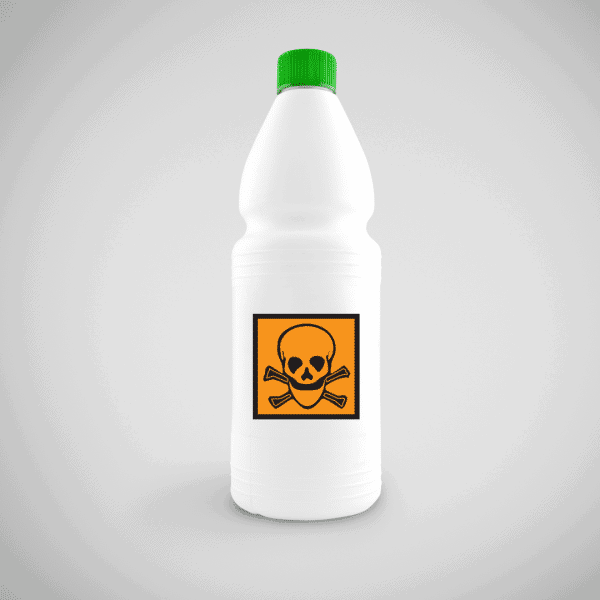
8. Chlorine Bleach
Many standard household cleaning products like mildew removers, scouring powders, and toilet bowl cleaners contain chlorine, which is a powerful disinfectant. However, it can irritate your eyes and respiratory system, and it may interfere with proper thyroid functioning. As mentioned above, contact with ammonia can form a deadly gas.
This substance, in large quantities, is so perilous that it was used as a chemical weapon in World War I!
9. Perchloroethylene
The truth about perchloroethylene may make you rethink your use of traditional household carpet and upholstery cleaners. Inhaling too much of this VOC can irritate your eyes and harm your respiratory system. It may also cause short-term loss of coordination, dizziness, drowsiness, headaches, vomiting, and nausea.
Prolonged exposure to perchloroethylene may incite changes in mood, memory, concentration, cognitive abilities, and vision. Cancer is yet another serious consequence of long-term exposure to this ubiquitous cleaning ingredient.
10. Formaldehyde
Formaldehyde is a popular ingredient in household disinfectant cleaning solutions, since it kills germs and fungi. High levels of exposure to this powerful carcinogen may irritate the skin, throat, eyes, and nose. They can also trigger wheezing, coughing, and nausea.
According to Canada’s Health and Environmental Awareness Project, formaldehyde is known to cause cancer. Laboratory studies demonstrate that rats who inhaled formaldehyde were much more likely to develop nasal cancer and leukemia.
Are Household Cleaning Products Just As Dangerous as Cigarettes?

While most people are aware that smoking cigarettes increases their risk of respiratory disease – including cancer – most have never associated the same risk with their use of cleaning supplies.
A groundbreaking study published in the American Journal of Respiratory and Critical Care Medicine shatters common myths about household cleaning products and reveals strong evidence that frequent contact with household cleaning supplies may be as dangerous as smoking a pack of cigarettes a day.
In this study, the European Community Respiratory Health Survey observed the long-term consequences of using household cleaning products. This comprehensive study spanned 20 years, and it includes 6,230 participants from 22 different places around the world. The individuals provided information pertaining to how often they came into contact with cleaning products, including regular household cleaning and cleaning professionally.
Researchers measured the lung function of participants at the beginning and end of the study. Specifically, they measured FEV1 (forced expiratory volume in 1 second) and FVC (forced vital capacity). FEV1 is how much air an individual is able to exhale in one second. FVC is the amount of air an individual is capable of exhaling using as much time as they need to accomplish this.
Their findings showed a correlation between frequency of contact with household cleaning supplies and decreased lung functioning. Women who were the primary cleaners in their homes, or who cleaned professionally, demonstrated a faster decline in lung function than women who were not the primary cleaners in their homes and who did not clean professionally.
Although the study involved men, researchers did not find the same decline in respiratory health in men. There are two possible reasons for this. One is that a greater number of the participants were women, so men weren’t as well represented in the sample population. Another factor to consider is that a smaller percentage of the men in the study had professional cleaning careers.
The results of the study indicate that exposure to household cleaning supplies for ten to twenty years is comparable to the health risk of smoking one pack of cigarettes per day for ten to twenty years!
Studies Revealing Respiratory Harm from Cleaning
The aforementioned study is impressive in number of participants and duration. Twenty years is a seriously realistic amount of time, which is great for shedding light on long-term effects! But this is not the only study that demonstrates the danger of using popular cleaning products.
Short-Term Use of Cleaning Products May Exacerbate Asthma
Another study, published by the Occupational and Environmental Medicine journal, measured the short-term impacts of working with cleaning products. The participants consisted of twenty-one women who worked as professional cleaners and had asthma at the time of the study.
Throughout the 312-day study, participants recorded both their respiratory symptoms and what kinds of cleaning supplies they used. They also used a handheld spirometer to keep track of their their forced expiratory volume in 1 s (FEV1) and peak expiratory flow (PEF).
Researchers concluded that cleaning products such as sprays and irritants increased the risk of worsening asthma symptoms.
The evidence just keeps coming: consider another scientific study, entitled “The Use of Household Cleaning Sprays and Adult Asthma.” The objective of this study was to explore the risk of developing asthma as a result of using household cleaning sprays. The results show that there is an association between using chemical cleaning sprays on a weekly basis and the occurrence of new asthma symptoms, including wheezing. For people who used household cleaning sprays at least four times a week, it was more common for them to develop symptoms severe enough to be diagnosed as asthma by physicians.
Scented Cleaning Products Emit Profoundly Dangerous Chemicals
This next study, published in Environmental Health Perspectives, reveals that scented cleaning products release over 100 VOCs. The scented products evaluated in the study included fabric softeners, air fresheners, disinfectants, dryer sheets, and all-purpose cleaners.
The study found that some of the chemicals released interacted with ozone in the ambient air to create unhealthy secondary pollutants, such as formaldehyde, ethanol, and acetone. Furthermore, about half of the products produced carcinogenic pollutants. It is important to realize that a carcinogenic substance has the potential to cause cancer and, according to the U.S. Environmental Protection Agency, there is no safe exposure level for these substances.
The health consequences are real: the scientists conducting the study received numerous messages from people reporting health complications after using scented cleaning products. Their complaints included neurological, dermatological, and respiratory problems. Dryer sheets were correlated with seizures in children and fainting in adults.
Antimicrobials and Gut Health
It is important to revisit the question posed at the beginning of this article: if bacteria and fungi can make you sick, why is it a bad thing to use antimicrobial cleaning products? The problem with popular antimicrobial cleaners is that, while they do effectively kill harmful microorganisms, they also kill a type of healthy bacteria, or “probiotics.”
When antimicrobial cleaning products enter your body, either through inhalation or direct skin contact, this becomes a problem. Probiotics are essential for maintaining a healthy gut, and a healthy gut microbiome is essential for overall health. The absence of this healthy bacteria can make you vulnerable to a host of health problems.
Overuse of aggressive antimicrobials also increases the growth of antibiotic-resistant bacteria.
How to Protect Yourself: 9 Safety Tips
Luckily, there are several ways to protect yourself from the chemicals in household cleaning products. Reduce your exposure to toxins by incorporating as many as you can into your cleaning routine.
1. Keep Ammonia and Bleach Separate
If you’re using ammonia or a cleaning product that contains ammonia, do not allow this to mix with bleach or a cleaning solution that contains bleach. The combination can cause severe respiratory problems and even death.
2. Consult the Environmental Health Association of Nova Scotia’s Guide to Less Toxic Products
The Environmental Health Association of Nova Scotia’s Guide to Less Toxic Products has a comprehensive list of less-toxic alternatives to popular cleaning products. Select your cleaning products from this list to make sure you’re purchasing the safest options.
3. Allow for Proper Ventilation
If you choose to use commercial household cleaning products, open windows and doors for ventilation. This prevents a dangerous concentration of toxicity. You should also avoid using cleaning products in small, confined spaces.
4. Use Microfiber Cleaning Cloths
Microfiber cloths, which are crafted from polyester and polyamide, are designed specifically for removing dirt and grease without the aid of cleaning chemicals.
5. Replace Air Fresheners with Baking Soda or Dried Herbs
Since scented products release a myriad of VOCs, it is best to eliminate them altogether. Instead of masking unwanted odors with harmful products like air fresheners, use natural methods to remove the unpleasant smell.
You can do this a few different ways:
Place baking soda in an open container and put it in an enclosed area (like a smelly refrigerator). It will soak up the unwanted smells.
Use fragrant flowers or dried herbs for natural scents.
Gently boil water and fragrant spices (like cinnamon) on the stove.
6. Let the Sunshine Lighten Your Whites
Instead of chlorine bleach, take advantage of the sunny days! Hang your clothes out in the sunshine, because it will naturally lighten your linen and cotton.
7. Use Store-Bought Cleaning Products in Moderation
The directions on household cleaning products often tell you to use more of the substance than you actually need. Remember, these are powerful chemicals you’re working with! Use a smaller amount than recommended.
8. Use Plants to Detoxify Your Home
The quality of your home’s air plays a role in maintaining good health. Since household cleaning products release toxins, it is important to address the lingering effects they have on your environment, even after you switch to healthier alternatives. To naturally restore cleaner air, consider adding an array of plants throughout your house.
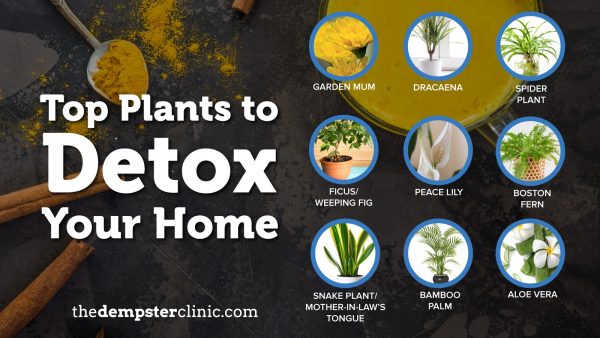
9. Make Your Own Cleaning Products with Non-Toxic Ingredients
The best step you can take is to eliminate toxic, store-bought cleaning formulas. There are, in fact, many safe and natural substances that clean just as well as mainstream cleaning products. The more you can use non-toxic alternatives and make your own cleaning solutions, the better. In the next section, you’ll find simple substitutions and easy recipes that you can use to replace toxic household cleaners.
DIY Recipes and Healthy Alternative to Typical Household Cleaners
The following DIY cleaners are easy to make, and you probably have most of the ingredients inside your house already. Another benefit is that it is much less costly to make your own cleaners!
1. Vinegar: The Simplest All-Purpose Cleaner
Vinegar is a remarkably effective all-purpose cleaner, and you can use it almost everywhere in your house. It is suitable for cleaning kitchen appliances, floors, countertops, bathrooms, and even dishes. (However, due to its high acidity, it may damage marble surfaces.)
- Vinegar eradicates viruses and bacteria, but it is less invasive than consumer household cleaners.
- Because it is so acidic, vinegar cuts through soap scum and mineral deposits, making it very useful for kitchen and bathroom cleaning.
Vinegar works just as well as bleach at destroying E. coli, as shown in studies conducted by the Journal of Environmental Health and the Journal of Food Protection.
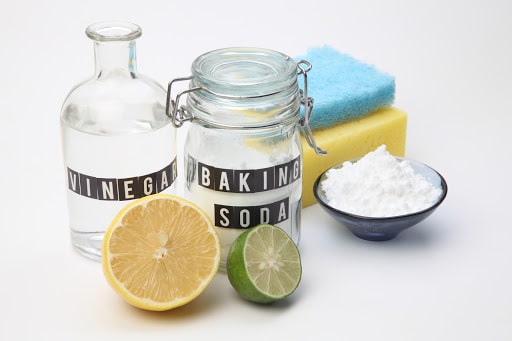
2. DIY Laundry Detergent
Instead of purchasing laundry detergent, you can make it yourself by mixing equal amounts of washing soda (sodium carbonate) and laundry borax. This does not take much time to make, and both ingredients are safe and environmentally friendly.
3. Drain Cleaner/Opener
For this recipe, you will need:
- Boiling hot water
- ½ cup of white vinegar
- ½ cup of baking soda
After pouring baking soda down the drain, add the white vinegar. After several minutes, empty a pot of boiling water down the drain. You can do this weekly as a preventative measure, or, if the drain is already clogged, plunge several times after applying the treatment.
4. Easy Window Cleaner
Make a solution of equal parts water and white vinegar. It will work just as well as the more expensive window cleaner from the store! According to the Health and Environmental Awareness Project, you should use a dab of dish soap the first time you do this. This takes away any residue that may be left over from the chemical window cleaner that you previously used.
5. Carpet Cleaner
The Environmental Health Association of Nova Scotia offers a wonderful DIY recipe for carcinogen-free carpet cleaner:
- Mix a quarter cup each of borax, vinegar, and salt. This will form a pasty substance, which you should then massage into your carpet. After a few hours, simply vacuum up the paste.
6. Wood Polish
To create gentle, natural wood polish, combine one half cup of warm water with a few drops of lemon oil. Lemons are acidic enough to cut through grease, and they have natural antimicrobial properties.
Learn More Ways to Protect Your Health at The Dempster Clinic- Center for Functional Medicine
Replacing toxic household cleaning supplies with safer alternatives is just one of the many ways you can protect your health. Are you interested in learning about more lifestyle changes that will improve your health and help prevent the risk of illness? Now is the perfect time to book an appointment with a functional medicine practitioner.
The Dempster Clinic- Center for Functional Medicine services patients throughout the Toronto area and beyond. I can work with you to develop a personalized healthy lifestyle plan. I am happy to offer a Complimentary 15-minute Discovery Session for all prospective patients. This session can take place over the phone or at the clinic in person. It provides an opportunity for you to learn more about the services I offer and how I can help you be as healthy as possible.
Please schedule an appointment today!
Dr. John Dempster, ND
The Dempster Clinic- Center for Functional Medicine


